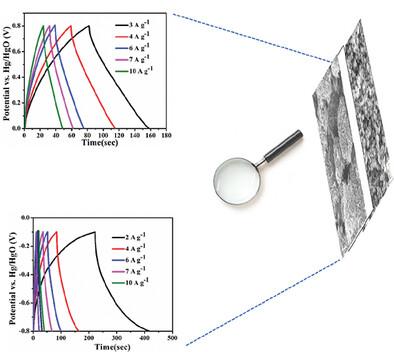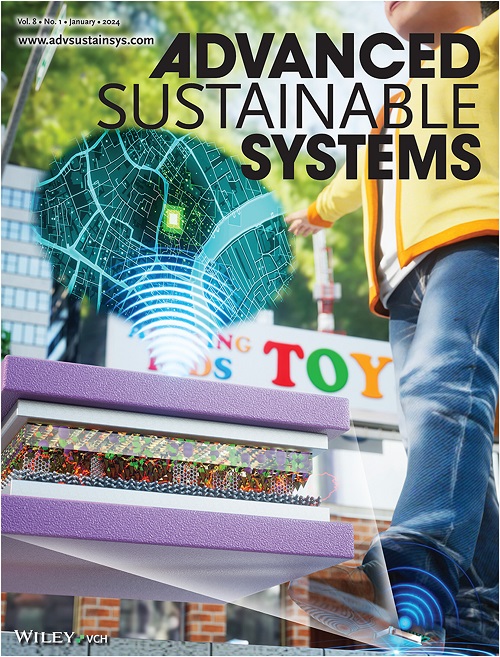基于氧化锌-氧化锰阴极材料和氧化铁-氧化镍/还原石墨烯阳极材料的不对称水性超级电容器
IF 6.5
3区 材料科学
Q2 GREEN & SUSTAINABLE SCIENCE & TECHNOLOGY
引用次数: 0
摘要
超级电容器负极材料具有提高能量密度的潜力,因此其最新进展备受关注。这些材料对于提高超级电容器的性能至关重要,尤其是在比电容方面。基于氧化铁的复合材料具有高比电容、宽电位窗口、出色的循环稳定性和非对称设计的适应性,因此是尖端超级电容器技术中极具吸引力的负极材料。合成的铁─镍氧化物/还原氧化石墨烯(FNG)复合材料在电流密度≈2 A g-1时的比电容≈500 F g-1。该研究还介绍了水热合成双金属氧化物(如氧化锌-氧化锰(ZMO))作为正极材料来制造不对称超级电容器(ASC)的方法。ZMO 的三电极配置所产生的电化学结果表明,其具有三角形充放电曲线的真实伪电容行为。以 ZMO 为阴极、FNG 为阳极制造的 ASC 所提供的能量和功率密度分别为 ≈32 W h kg-1 和 ≈2.3 kW kg-1。本文章由计算机程序翻译,如有差异,请以英文原文为准。

Asymmetric Aqueous Supercapacitor Based on Zinc Oxide‐Manganese Oxide Cathode Material and Fe─Ni Oxide/Reduced Graphene Oxide Anode Material
Recent advancements in negative electrode materials for supercapacitors have garnered significant attention due to their potential to enhance energy density. These materials are crucial in improving the performance of supercapacitors, particularly in terms of specific capacitance. Fe oxide‐based composites are attractive negative electrode materials for cutting‐edge supercapacitor technologies because of their high specific capacitance, broad potential window, outstanding cycle stability and adaptability in asymmetric design. The synthesized Fe─Ni oxide/reduced graphene oxide (FNG) composite delivered ≈500 F g−1 specific capacitance at ≈2 A g−1 current density. The work also describes the hydrothermal synthesis of a bimetallic oxide like zinc oxide‐manganese oxide (ZMO) as a positive material to fabricate asymmetric supercapacitor (ASC). The electrochemical results achieved from the three‐electrode configuration of ZMO indicate true pseudocapacitive behavior with the triangular charge–discharge curve. The fabricated ASC with ZMO as cathode and FNG as anode delivered energy, and power densities are ≈32 W h kg−1 and ≈2.3 kW kg−1 , respectively.
求助全文
通过发布文献求助,成功后即可免费获取论文全文。
去求助
来源期刊

Advanced Sustainable Systems
Environmental Science-General Environmental Science
CiteScore
10.80
自引率
4.20%
发文量
186
期刊介绍:
Advanced Sustainable Systems, a part of the esteemed Advanced portfolio, serves as an interdisciplinary sustainability science journal. It focuses on impactful research in the advancement of sustainable, efficient, and less wasteful systems and technologies. Aligned with the UN's Sustainable Development Goals, the journal bridges knowledge gaps between fundamental research, implementation, and policy-making. Covering diverse topics such as climate change, food sustainability, environmental science, renewable energy, water, urban development, and socio-economic challenges, it contributes to the understanding and promotion of sustainable systems.
 求助内容:
求助内容: 应助结果提醒方式:
应助结果提醒方式:


